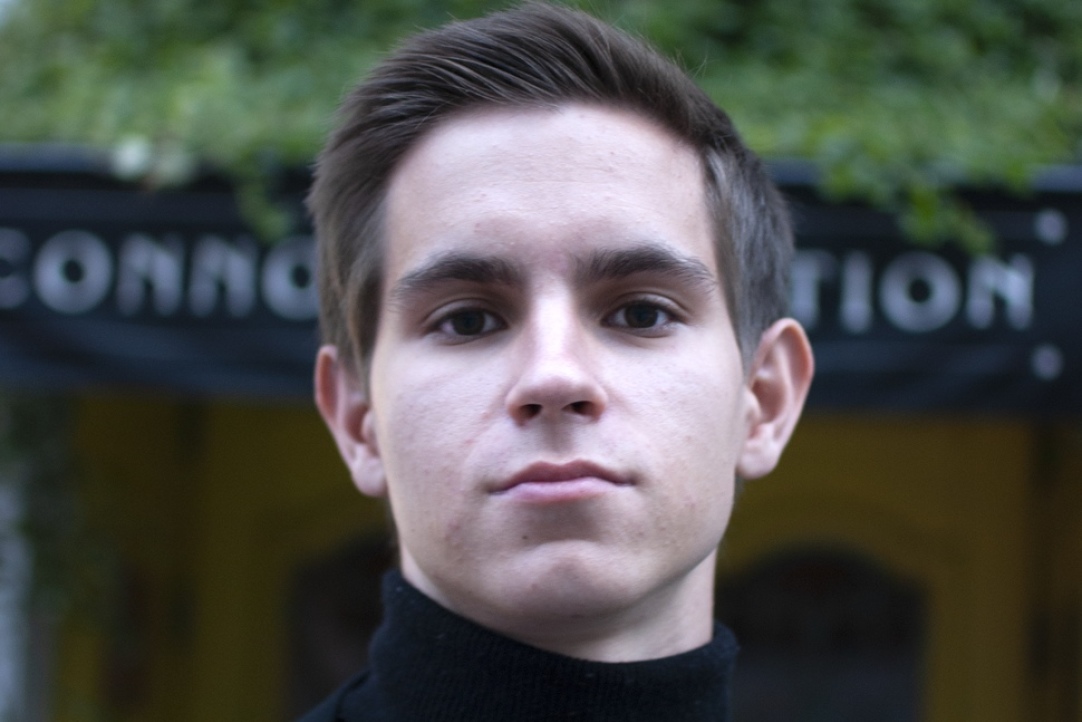HSE Student Wins UMNIK Innovation Project Support Programme

Pavel Samoilenko, a student at MIEM HSE, has been awarded a grant from the Innovation Promotion Foundation in support of his project which aims to develop mobile applications for navigating and visualizing 3D content inside buildings. The grant award totals 500,000 rubles.
The results of the competition were announced on August 12. The UMNIK programme is aimed at supporting commercially-oriented scientific and technical projects of young researchers.
As is known, many 3D games have spatial interface navigation, similar to AR (augmented reality), only within the world of the game. Pavel’s project, ‘Mobile Application Software Development for Indoor Navigation and Visualization of 3D Content Using Augmented Reality Technology’, which won the UMNIK programme competition, uses AR navigation technology for indoor navigation in real buildings. This approach, according to Pavel and his team, is much more convenient than using usual maps and diagrams.
We will develop a web platform for automatically constructing 3D building models based on building maps as well as for model customization. The client provides us with a map of his building, a 3D model is generated automatically, and we develop an application for the client based on it
Navigation software that uses AR technology is currently being developed for the MIEM building at HSE University as part of a pilot project. The team worked on developing the software during the past 2019-2020 academic year and presented the project at the MIEM Technoshow. ‘We now have a prototype of an Android navigation app for MIEM using augmented reality,’ says Pavel. ‘Now we are testing it. How it works is the user scans a marker (this is how the position and orientation of the device used inside the 3D building model is determined), selects a classroom from the list, and the application presents a route and gives signs in augmented reality.’ Many of the pilot project’s developments will be used in the new project: the idea of a digital twin will be used in the web platform, and positioning and navigation algorithms will be used in final applications.
The UMNIK programme selects project entries base on their novelty, relevance, and potential market competitiveness. Computer vision, used in robotics with depth-sensing cameras, allows robots to navigate indoors. The innovation of Pavel’s project lies in the transfer of this functionality to smartphones with a conventional RGB camera, where neural networks replace depth sensors, which the vast majority of smartphones do not have. Thus, a regular smartphone supporting AR will provide positioning accuracy of up to several centimeters due to cameras, and all this can be done without building expensive infrastructure. It is important to mention that AR is not a spin-off for the wow effect, but a key source of device location information. The technical novelty of the project lies in the very development of this technology.
‘I initially took on the project with the understanding that there is demand, and this is a promising idea for development outside the university,’ says Pavel. ‘After defending the project, our academic supervisor Alexey Rolich suggested that I enter the project in the Innovation Promotion Fund competition. He helped me put together our application and provided guidance when I had questions, which helped me a lot.’
According to Pavel, the biggest competition for his project comes from a London-based startup called ARWay. In Russia, there is a similar startup called Navigine, whose technology provides local positioning and tracking of a user’s location in a building using iBeacon Bluetooth beacons.
But this technology does not provide sufficient positioning accuracy and information about the orientation of the device inside the building for AR use. In other words, there are no direct analogues of Pavel’s project on the Russian market.
Now Pavel’s team consists of three people, and they are continuing to work on the app for MIEM. His teammates are second-year master’s students Marina Firsova and Diana Rakhimova who study in the programme, ‘Internet of Things and Cyber-Physical Systems’. One of the team’s main tasks at the moment is to recruit new interested, self-starting students onto the project. ‘To implement the platform, we need web developers, developers in C #, C ++, and Unity,’ says Pavel. ‘This is the basis for creating a platform prototype. On its basis, it will be necessary to test hypotheses in order to form a value proposition and an image of the final product.’
By Polina Podkopaeva, MIEM

